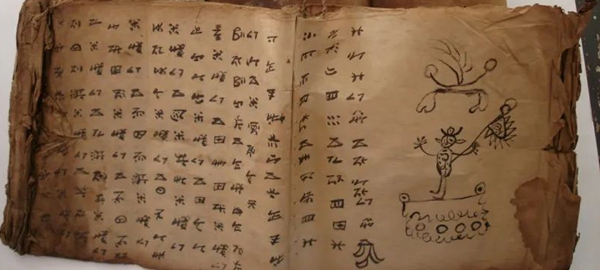


Yi ethnic culture

FILE PHOTO: An ancient text of the Yi creation epic, Cha Mu
The Yi ethnic group is China’s sixth-largest minority, numbering approximately 9.8 million. They are predominantly distributed across Yunnan, Sichuan, Guizhou, and Guangxi, with the Liangshan Yi Autonomous Prefecture serving as the largest Yi settlement in the country.
Before the founding of the People’s Republic of China in 1949, the scattered settlements of the Yi led to uneven social and political development across their regions. In Yunnan, remnants of feudal lordship persisted into the first half of the 20th century, upheld by the “Tusi system” (native chieftain system). Meanwhile, the Liangshan Yi area remained a strictly hierarchical slave society until the PRC’s establishment, after which democratic reforms were implemented, and multiple autonomous regions were established for the Yi.
The Yi people traditionally practice animistic beliefs, worshiping nature, totems, ancestors, and the spirits they believe inhabit all things. Many villages still maintain elements of natural worship, including sacred trees and groves. Their language belongs to the Tibeto-Burman branch of the Sino-Tibetan family, and they hold the color black in high regard. Historically, slave owners were known as “black Yi,” while others were called “white Yi.”
Yi traditional clothing reflects their cultural identity. Men wear black wool felt cloaks, paired with black headwraps adorned with a cone-shaped horn known as the “hero knot.” Women’s attire includes pleated skirts reaching the feet, black tops embroidered with intricate patterns, and black headscarves elaborately decorated with intricate embroidery.
The Torch Festival is the most significant traditional celebration of the Yi people, typically observed on the 24th day of the 6th lunar month and lasting three days. Its origins are rooted in the Yi people’s veneration of fire, which was believed to drive away pests and insects, thereby safeguarding crops. During the festival, large torches made of dry pinewood are erected in the village square, with smaller torches placed in front of each household. As night falls, these torches are lit, illuminating the entire village. Villagers carry smaller torches, circling fields and homes. Around the bonfires, young men and women sing, dance, and play music, reveling in festive joy that continues into the night. The celebration also includes a variety of traditional activities, such as horse racing, archery, wrestling, tug-of-war, and swings, as well as various lively bazaars.
Copyright©2023 CSSN All Rights Reserved